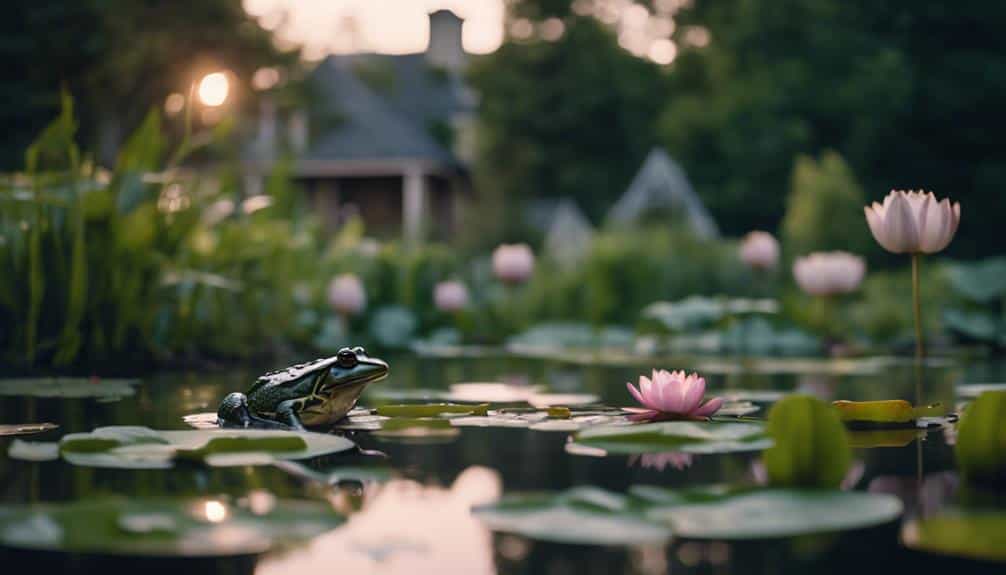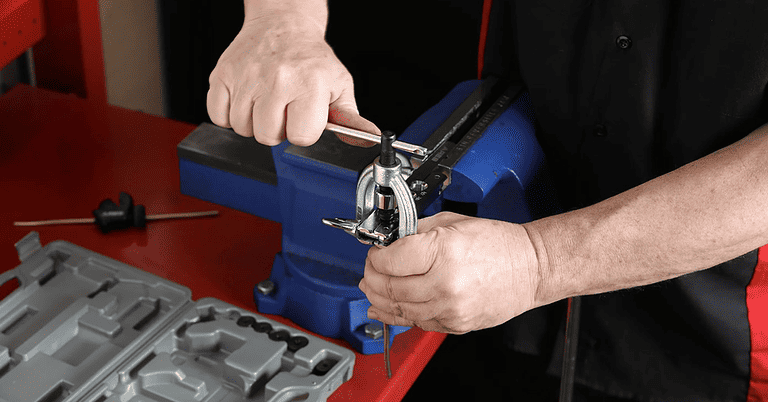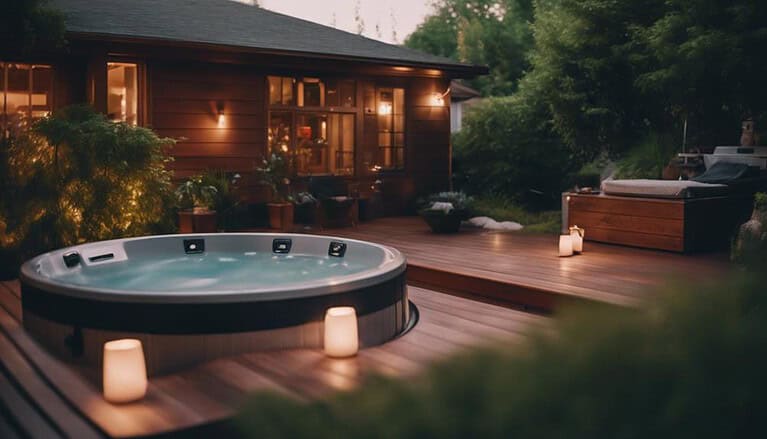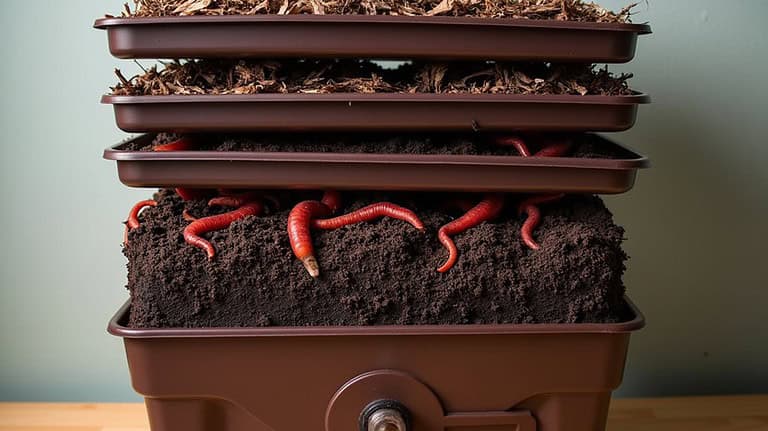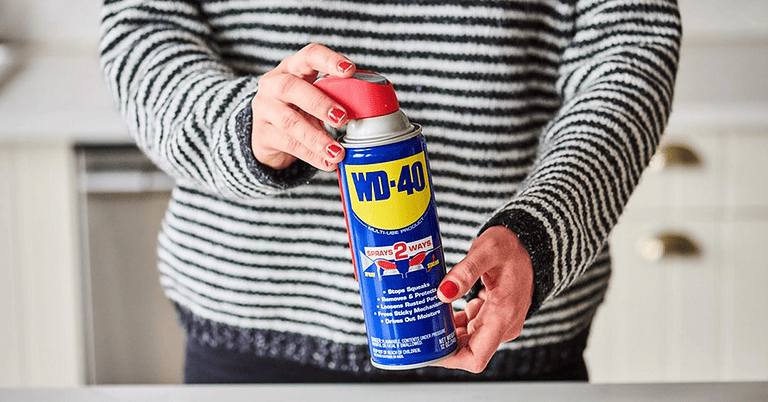How to Get Rid of Bullfrogs
Are you tired of dealing with mean bullfrogs taking over your pond or garden? It's time to reclaim your outdoor space! To get rid of them, you need to know where they hang out and what they like. Bullfrogs love places with lots of food, so messing up their food supply is key. Try removing them by hand, using traps and barriers, and bringing in natural enemies like snakes, birds, and turtles to keep their numbers down. Changing your pond setup by adding barriers and attracting natural enemies can also help keep them away. Follow these steps, and soon you'll have a bullfrog-free zone. There's more to discover to keep your outdoor area thriving.
TLDR
- To control bullfrog populations, you can remove them physically, disrupt their food sources, and make changes to the environment.
- Use traps, barriers, and special fences to keep bullfrogs out of certain areas.
- Make ponds less inviting for bullfrogs by adding barriers, removing extra plants, and spreading salt.
- Get rid of places where bullfrogs can breed by destroying small ponds, cleaning up where they lay eggs, and using barriers to stop them from reproducing.
- Keep up with maintenance and check regularly to make sure bullfrogs don't come back and to keep your area free of them.
Understanding Bullfrog Behavior Patterns
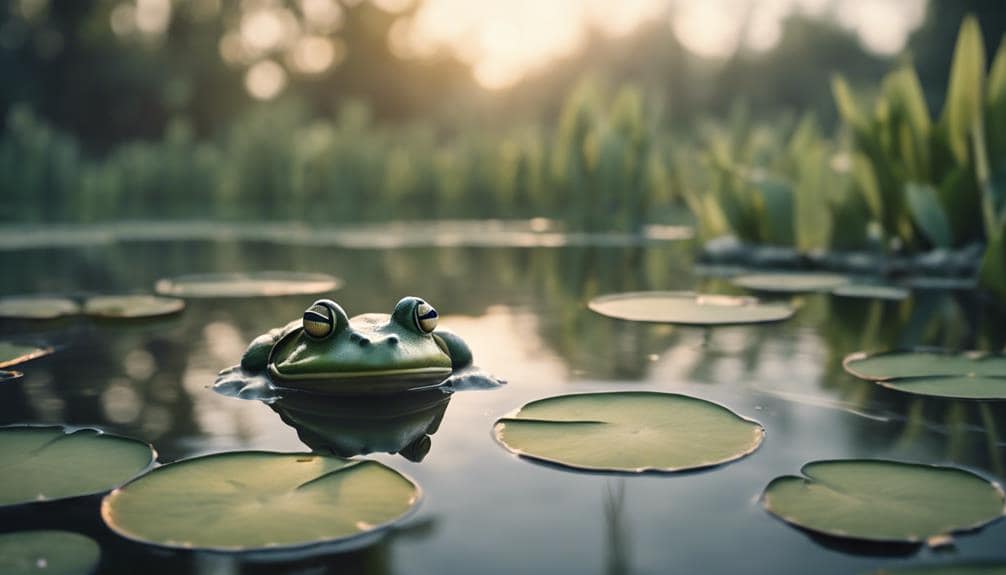
When dealing with bullfrogs, it's key to know how they act, like eating meat and being aggressive hunters, to control their numbers effectively. Bullfrogs, being meat-eaters, are drawn to places with lots of food, so disrupting their food supply is crucial. You can manage their population by physically removing them and cutting off their food sources. Understanding their behavior helps you take targeted steps to reduce their numbers and maintain a healthy ecosystem. By taking action early, you can safeguard the native wildlife in your pond and keep things in balance.
Identifying Bullfrog Habitats and Breeding
Now that you understand how bullfrogs behave, let's find out where they like to hang out! You can often spot them in ponds, lakes, wetlands, marshes, and areas with lots of aquatic plants – perfect places for them to breed and increase in numbers. By recognizing these habitats, you'll be closer to managing their population effectively.
Pond and Lake Areas
Around ponds and lakes, you'll see bullfrogs thriving in shallow water with lots of plants. This is where they like to lay their eggs in groups stuck to plants or debris. The baby frogs, called tadpoles, grow up in the water, eating algae and tiny bugs. Ponds and lakes are great places for bullfrogs to have babies and find food. To deal with them, you need to know where they like to hide along the water's edge and be ready to act fast to control their numbers.
Wetland and Marshes
Moving from ponds and lakes, you'll often find bullfrogs in wetlands and marshes. These places have shallow water and lots of plants where bullfrogs can breed and find food. Wetlands and marshes are perfect for bullfrogs because they have everything they need to live and grow. To control the spread of bullfrogs, we need to know where they live in wetlands and marshes and take action to manage them. Understanding how they breed and where they live helps us make plans to reduce their numbers and protect native plants and animals. Remember, every little effort helps in stopping invasive species and keeping our natural areas safe.
Aquatic Plant Habitats
Bullfrogs like to hang out in places with lots of water plants. These plants give them good hiding spots to breed and hunt. These spots also offer plenty of food and keep them safe from other animals, which is important for bullfrog groups. When you visit these places, look for thick patches of water lilies, cattails, or duckweed because bullfrogs love to hide in them. Keeping these plants in check is crucial to stop bullfrogs from breeding too much. By managing the water and trimming the plants, you can make it harder for bullfrogs to take over. This will help control their numbers and keep the ecosystem healthy.
Removing Bullfrogs by Hand
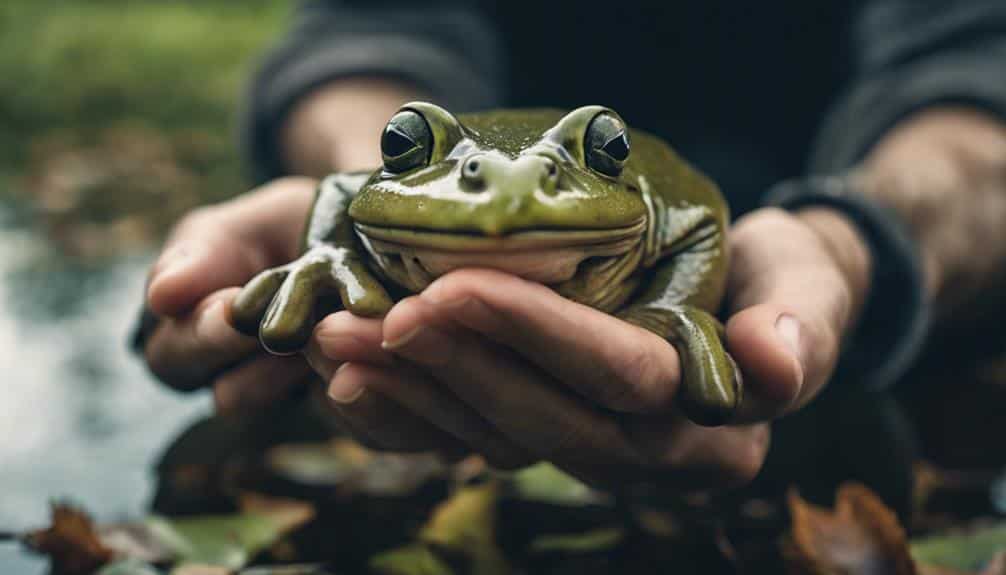
Catch bullfrogs with a net, be gentle, and wear gloves to protect your hands. Approach slowly, scoop up in the net without hurting them, and release in a different area. Handle them carefully as they are fragile. If uncomfortable, get professional help. By doing this, you'll remove the frogs and take back your outdoor space.
Setting Up Traps and Barriers
After getting rid of the bullfrogs manually, it's time to put up traps and barriers to stop them from coming back! Look into fences that keep frogs out, check different trap options, and choose the best materials for barriers. With a good system in place, you'll soon have a pond free of bullfrogs.
Frog-Proof Fencing Options
To stop invasive bullfrogs from getting into your garden or pond, use strong vinyl screening as a barrier. Add this screening to the bottom 24 inches of your fences to block any gaps that might let bullfrogs through. Put up barriers around ponds using the screening to keep bullfrogs out. Make sure the screening is at least 24 inches tall and buried 6 inches in the ground for the best results. You can also use 4-foot-wide screening to build a tall fence that will deter bullfrogs.
Trapping Methods Compared
You can use traps and barriers together to get rid of bullfrogs from your garden or pond. Place traps near the pond to catch bullfrogs without hurting them. Put up fences or screens around the pond to stop bullfrogs from getting in. Using traps and barriers together is a strong way to keep your pond free of bullfrogs. Remember to check the traps often and release any frogs you catch. With the right traps and barriers, you can enjoy a bullfrog-free garden or pond.
Barrier Material Selection
When choosing a material to stop bullfrogs from entering your garden or pond, strong vinyl screening works well. Use it to make a barrier around your pond or area to keep bullfrogs away. Attach the screening to the bottom 24 inches of existing fences to cover any gaps. For ponds, make a barrier at least 24 inches high and buried 6 inches in the ground. You can also use 4-foot-wide screening to create a tall fence around specific areas to keep bullfrogs out. Make sure to install and secure it properly to effectively keep those unwanted visitors out and get rid of frogs for good!
Using Natural Predators for Control
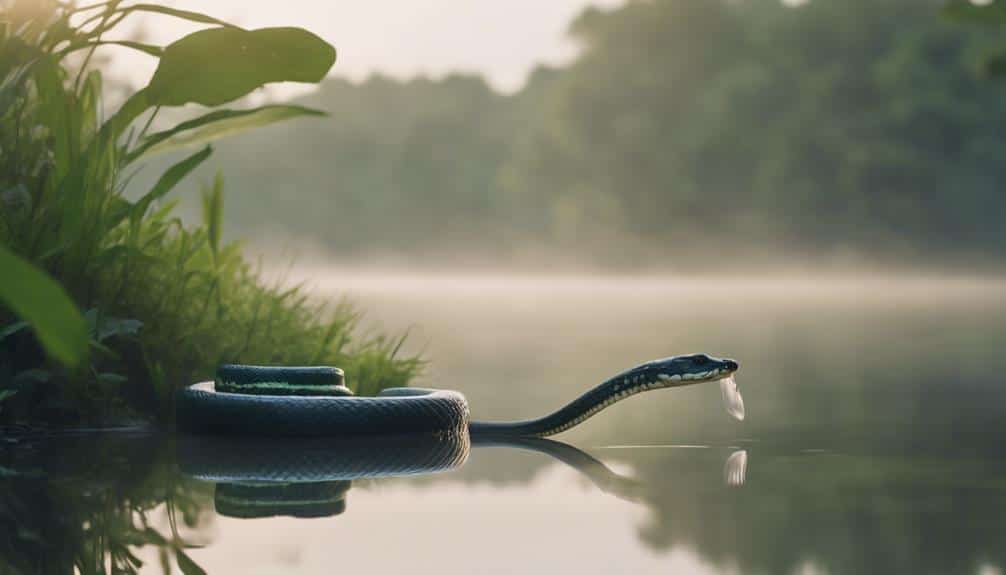
One good way to control bullfrog populations is by introducing natural predators that eat these invasive species. This helps keep your pond's ecosystem in balance. Snakes, for example, are known to eat bullfrogs and can help reduce their numbers. Birds like herons and egrets also prey on bullfrogs, which helps control their population. Turtles are another predator that can help manage bullfrog numbers by hunting them. By bringing in these natural predators, you'll be taking a big step towards keeping your pond healthy. This method not only gets rid of bullfrogs but also supports a balanced environment. So, why not invite these natural predators to help out? Your pond will appreciate it!
Chemical Repellents and Deterrents
Chemical repellents can help keep bullfrogs away from your pond. Pest Rid is a safe option that repels frogs, snakes, and insects. You can sprinkle or spray Pest Rid around your pond to keep bullfrogs out. It smells strong to pests but not to humans, and it won't harm aquatic life. Another option is using citric acid, a natural deterrent for bullfrogs. Using these repellents along with other methods will help you have a bullfrog-free pond in no time.
Modifying Environment to Deter Bullfrogs
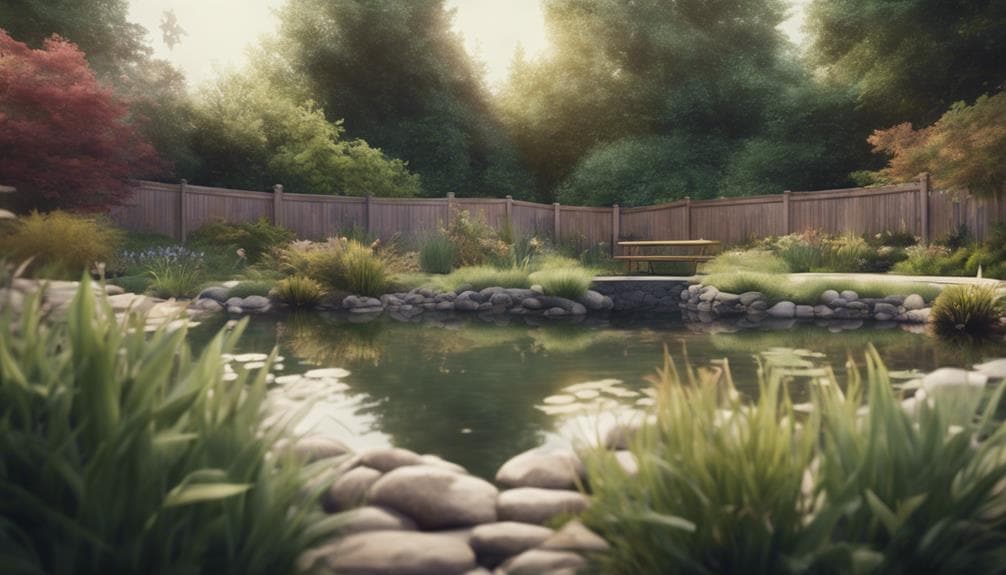
Change your pond to make it harder for bullfrogs to live there. Use barriers, attract animals that eat bullfrogs, and change the environment so they won't want to stay. By making it tough for them to live there, you can keep them away. Put covers and barriers on your pond to stop bullfrogs from getting in. Bring in natural enemies like snakes or birds that eat bullfrogs to help reduce their numbers. Remember, it's against the law to let non-native species like bullfrogs loose, so it's important to take action to keep them out. By changing your surroundings, you can reclaim your yard and keep it free of bullfrogs.
Disrupting Bullfrog Food Chains
By letting bullfrogs thrive, you're messing up your pond's food chain. They eat up native species like crazy, not caring if it's insects, small animals, birds, or fish. This messes with how things naturally work. When you try to kick them out, remember that bullfrogs bring diseases and bugs that can harm other animals. By getting rid of these frogs, you're not just saving the variety of life in your pond but also stopping changes in plants that could hurt other water creatures. It's important to control bullfrog numbers to keep the balance in check. Act now to remove these unwanted guests and bring back peace to your pond's ecosystem.
Preventing Bullfrog Reproduction
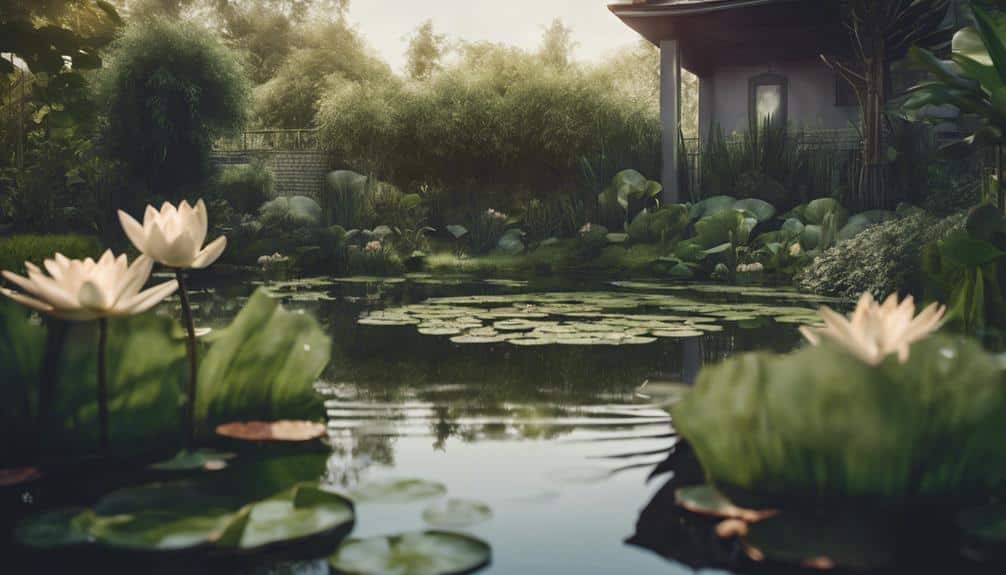
Now that you've messed up the bullfrog food chain, it's time to stop them from having babies! Change where they live, get rid of their places to lay eggs, and remove eggs and baby frogs to stay ahead. By doing these things, you'll be on your way to a place without bullfrogs!
Habitat Modification Strategies
You can reduce bullfrog reproduction by changing the pond's habitat to make it less welcoming for them. One way is to clear away extra plants so bullfrogs have fewer places to hide and breed. Spreading salt around the pond's edges can also discourage frogs from coming. Be careful not to overfeed fish, as too much food can attract bullfrogs seeking an easy meal. By making these changes to the habitat, you can stop bullfrog reproduction and regain control of your pond. Remember, small adjustments can make a big difference, so keep at it and you'll create a bullfrog-free area.
Breeding Site Elimination
To stop bullfrogs from multiplying, it's important to destroy their breeding spots like small ponds and still water areas. Clean up places where they lay eggs, like water plants and debris, and regularly check and clean spots where tadpoles grow. You can use pond liners or barriers to block their breeding areas. Also, consider using systems to move water around or add air to discourage bullfrogs from reproducing in stagnant water. These steps will help prevent bullfrog babies and reduce their numbers.
Egg and Tadpole Removal
Getting rid of bullfrog eggs and tadpoles is crucial to stop them from multiplying and overpopulating ponds and water features. Simply scrape off the eggs from surfaces close to water, put them in sealed bags, and dispose of them to prevent hatching. You can also dry out or crush the eggs to stop them from growing into tadpoles. As for tadpoles, catch and get rid of them before they turn into bullfrogs. It's essential to halt bullfrog reproduction to control their numbers. By removing eggs and tadpoles, you're taking a big step towards eliminating these unwanted invaders and enjoying your outdoor space once more. Start now and reclaim your pond or water feature!
Ongoing Maintenance and Monitoring
To prevent bullfrogs from coming back to your pond, it's important to check regularly for signs of breeding and new activity. Keep things like leaves and plants cleaned up, trim any overgrown plants, and adjust the lighting to make the area less appealing to bullfrogs. Make sure the pond is clear of clutter and that there are barriers to stop them from getting in. Also, change the water levels and temperature to make it harder for bullfrogs to live there. Watch out for tree frogs, which are often protected by law. Stay on top of things and take action to keep bullfrogs away. If you need help, consider hiring professionals to keep an eye on things and maintain the pond.
Conclusion
Congratulations! You're ready to tackle those pesky bullfrogs in your garden or pond. Remember, it's important to be consistent and patient. Keep an eye on your progress and be willing to change your strategies if needed. Together, we can restore the balance of our ecosystems and enjoy nature without the interference of bullfrogs!

